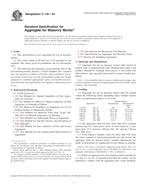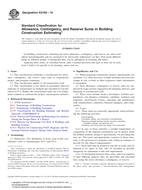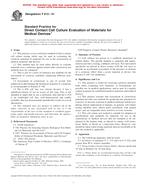1.1 This practice covers a methodology for establishing an acceptable tolerance zone for the difference between the result obtained from a single implementation of a test method on a CS and its ARV, based on user-specified Type I error, the user-established test method precision, the standard error of the ARV, and a presumed hypothesis that the laboratory is performing the test method without bias.
Note 1 – Throughout this practice, the term user refers to the user of this practice; and the term laboratory (see 1.1) refers to the organization or entity that is performing the test method.
1.2 For the tolerance zone established in 1.1, a methodology is presented to estimate the probability that the single test result will fall outside the zone, in the event that there is a bias (positive or negative) of a user-specified magnitude that is deemed to be of practical concern (that is, the presumed hypothesis is not true).
1.3 This practice is intended for ASTM Committee D02 test methods that produce results on a continuous numerical scale.
1.4 This practice assumes that the normal (Gaussian) model is adequate for the description and prediction of measurement system behavior when it is in a state of statistical control.
Note 2 – While this practice does not cover scenarios in which multiple results are obtained on the same CS under site precision or repeatability conditions, the statistical concepts presented are applicable. Users wishing to apply these concepts for the scenarios described are advised to consult a statistician and to reference the CS methodology described in Practice D 6299.
Product Details
- Published:
- 12/01/2008
- Number of Pages:
- 5
- File Size:
- 1 file , 90 KB
- Redline File Size:
- 2 files , 170 KB


